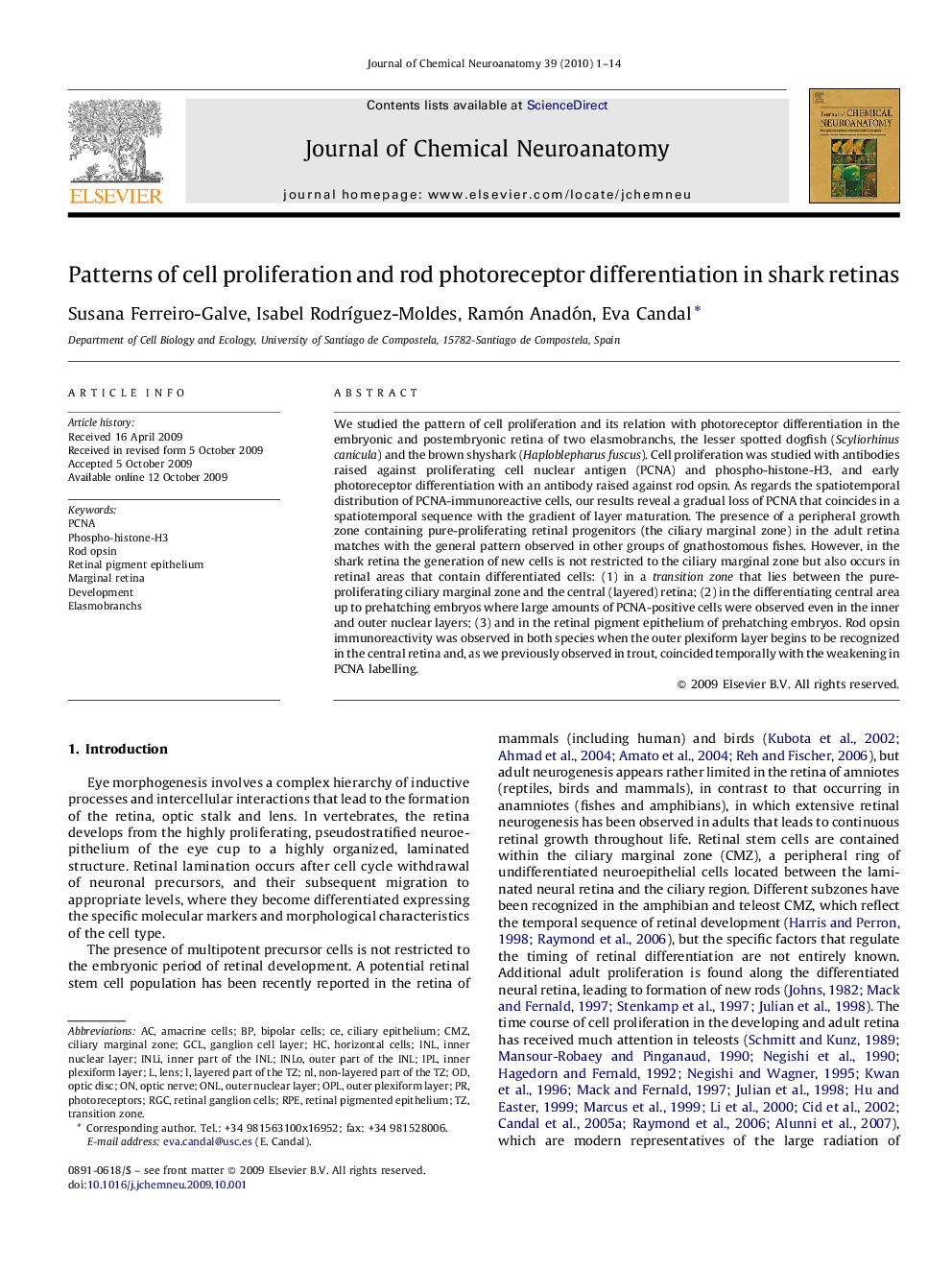| Article ID | Journal | Published Year | Pages | File Type |
|---|---|---|---|---|
| 1989215 | Journal of Chemical Neuroanatomy | 2010 | 14 Pages |
Abstract
We studied the pattern of cell proliferation and its relation with photoreceptor differentiation in the embryonic and postembryonic retina of two elasmobranchs, the lesser spotted dogfish (Scyliorhinus canicula) and the brown shyshark (Haploblepharus fuscus). Cell proliferation was studied with antibodies raised against proliferating cell nuclear antigen (PCNA) and phospho-histone-H3, and early photoreceptor differentiation with an antibody raised against rod opsin. As regards the spatiotemporal distribution of PCNA-immunoreactive cells, our results reveal a gradual loss of PCNA that coincides in a spatiotemporal sequence with the gradient of layer maturation. The presence of a peripheral growth zone containing pure-proliferating retinal progenitors (the ciliary marginal zone) in the adult retina matches with the general pattern observed in other groups of gnathostomous fishes. However, in the shark retina the generation of new cells is not restricted to the ciliary marginal zone but also occurs in retinal areas that contain differentiated cells: (1) in a transition zone that lies between the pure-proliferating ciliary marginal zone and the central (layered) retina; (2) in the differentiating central area up to prehatching embryos where large amounts of PCNA-positive cells were observed even in the inner and outer nuclear layers; (3) and in the retinal pigment epithelium of prehatching embryos. Rod opsin immunoreactivity was observed in both species when the outer plexiform layer begins to be recognized in the central retina and, as we previously observed in trout, coincided temporally with the weakening in PCNA labelling.
Keywords
INLciliary marginal zoneOPLONLrod opsinIPLPCNARPEGCLRGCElasmobranchsCMZciliary epitheliumretinal pigment epitheliumRetinal pigmented epitheliumOptic discDevelopmentAmacrine cellshorizontal cellsRetinal ganglion cellsBipolar cellsLensOptic nervePhotoreceptorsouter plexiform layerouter nuclear layerinner plexiform layerinner nuclear layerganglion cell layerTransition zone
Related Topics
Life Sciences
Biochemistry, Genetics and Molecular Biology
Biochemistry
Authors
Susana Ferreiro-Galve, Isabel RodrÃguez-Moldes, Ramón Anadón, Eva Candal,
